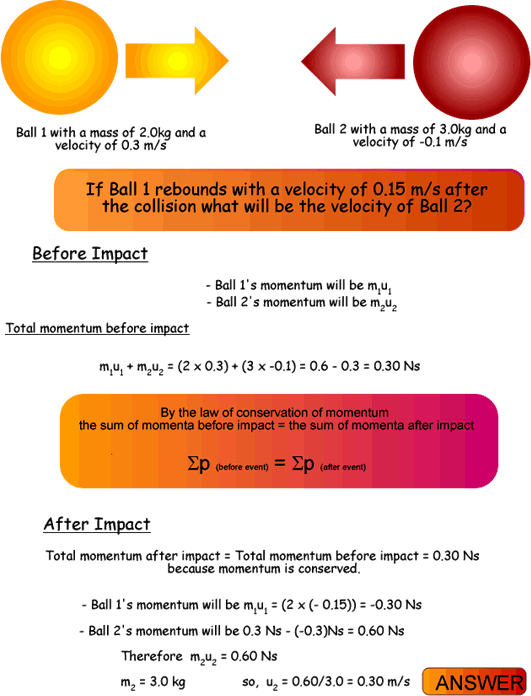Conservation of Momentum Momentum has a special property that, in a closed system (one in which no external forces act on the colliding/exploding bodies) it is always conserved, even in collisions and separations caused by explosive forces. Because momentum is conserved it can be used to calculate an unknown velocity following a collision or a separation if all the other masses and velocities are known. The sum of the momentum before the collision must equal the sum of the momentum after the collision.
See the example below for how the conservation of momentum can be used to find out unknown values after a collision:
Elastic CollisionsKinetic energy is not conserved in collisions if they are inelastic (which most collisions are, only 'ideal' collisions - such as those considered in theory between gas molecules - conserve kinetic energy). More...Click here to go to a site that has a few more examples for you to work through... Click here to go to a page with suggested web-based activities for you to try! |
Follow me...
|






